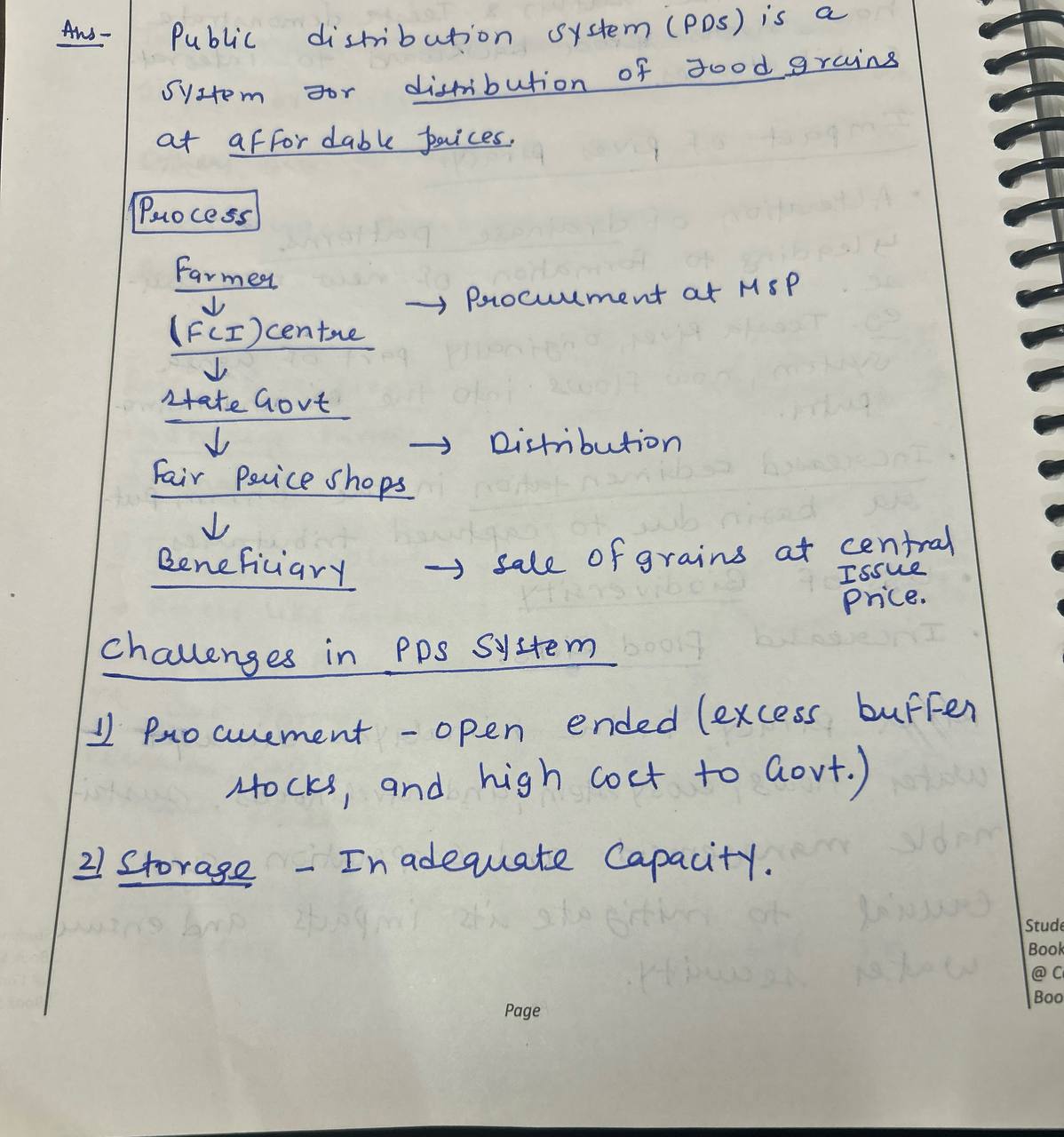Roadmap for Answer Writing 1. Introduction Briefly define GM crops and mention their primary objectives, such as increasing yields, enhancing resistance to pests and diseases, and improving tolerance to environmental stresses like drought. Mention the dual nature of the debate: the promise of ...
Model Answer Introduction The Yellow Revolution, also known as the Oilseed Revolution, was a significant transformation in India's agricultural sector. Launched in 1986, this movement aimed to boost the production of oilseeds, improving the nation's self-sufficiency in edible oils. It played a vitalRead more
Model Answer
Introduction
The Yellow Revolution, also known as the Oilseed Revolution, was a significant transformation in India’s agricultural sector. Launched in 1986, this movement aimed to boost the production of oilseeds, improving the nation’s self-sufficiency in edible oils. It played a vital role in reducing India’s dependence on oilseed imports and enhancing food security.
About the Yellow Revolution
- Origin:
- The Yellow Revolution began in 1986 under the Oil Technological Mission, continuing until 1987, with a focus on increasing the production of oilseeds.
- Coverage:
- It focused on major oilseeds such as mustard, soybean, and sunflower.
- Yield Improvement:
- The revolution introduced high-yielding hybrid varieties of oilseeds, leading to a significant increase in yields. For example, mustard yields increased from around 675 kg per hectare in 1960-61 to over 1,500 kg per hectare in recent years.
- Global Impact:
- Today, India is the fourth-largest producer of oilseeds globally, accounting for about 20% of the global area and 10% of the total production.
Significance of the Yellow Revolution for India’s Economy:
- Reduced Import Dependence:
- The increase in domestic production helped reduce India’s reliance on oilseed imports, improving the trade balance and ensuring greater economic stability.
- Rural Employment and Livelihoods:
- Oilseed cultivation created new job opportunities in rural areas, contributing to livelihood enhancement. Farmers benefitted from increased income through oilseed farming, processing, and marketing.
- Value Addition and Agro-processing:
- The rise in oilseed production also led to the growth of agro-processing industries, including oil extraction and refining units. This added value to raw oilseeds and generated additional economic returns.
- Boost to Agricultural Productivity:
- The Yellow Revolution encouraged the adoption of modern farming practices, improved seed varieties, and advanced technology, all of which boosted agricultural productivity.
- Spillover Effects on Other Industries:
- Oilseeds are not only used in food production but also serve as raw materials for industries like cosmetics, chemicals, soaps, and detergents, contributing to economic growth beyond agriculture.
- Human Capital Development:
- The increased availability of edible oils improved nutrition across the country, leading to better health outcomes and the development of human capital. For example, per capita edible oil consumption rose from 6.4 kg in 1976 to 15.4 kg by 2013.




Model Answer Introduction Genetically modified (GM) crops are plants that have been altered through modern biotechnology to include novel combinations of genes. In India, the Genetic Engineering Appraisal Committee (GEAC) is responsible for the approval and commercial release of GM crops. While GM cRead more
Model Answer
Introduction
Genetically modified (GM) crops are plants that have been altered through modern biotechnology to include novel combinations of genes. In India, the Genetic Engineering Appraisal Committee (GEAC) is responsible for the approval and commercial release of GM crops. While GM crops are praised for their potential to enhance yields and resilience, concerns regarding their ecological impact and food safety remain significant.
Role of GM Crops in Enhancing Yields and Resilience
GM crops are designed to tackle several agricultural challenges, contributing to both improved crop productivity and resilience:
Ecological and Food Safety Concerns
Despite the potential benefits, GM crops raise several environmental and food safety concerns:
Food Safety Concerns
Way Forward
To address the challenges surrounding GM crops, several measures can be taken:
- Evidence-Based Decisions: Governments should base decisions regarding GM technology on robust scientific research, ensuring that all benefits and risks are carefully evaluated.
- Openness and Transparency: A transparent approach to GM crop regulation can help build public trust. Clear communication about scientific findings and safety protocols is crucial to mitigate concerns.
- Stakeholder Involvement: It is important to involve all relevant parties, including scientists, farmers, consumers, and environmentalists, in decision-making processes. A participatory approach ensures that diverse perspectives are considered.
- Precautionary Principle: Due to the uncertainty surrounding GM technology, adopting a precautionary principle is advisable. This means waiting for broader scientific consensus before rolling out GM crops on a large scale.
- Improved Policy Frameworks: Policymakers should focus on creating frameworks that address pricing, input costs, and equitable benefits for all stakeholders involved in GM cultivation.
- Strong Liability Laws: Enforcing strict liability laws will hold companies accountable for any environmental or unforeseen harm caused by GM technology. This encourages responsible practices and environmental stewardship.
See less